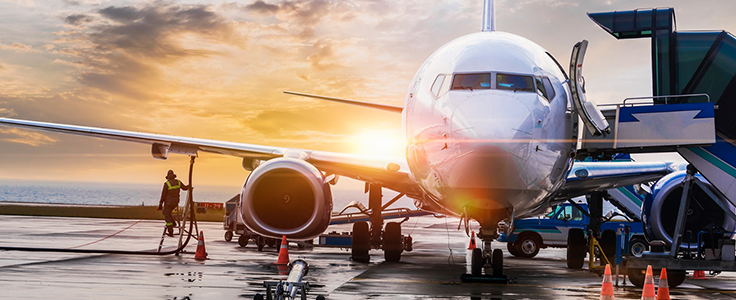Aviation and Engineering

“The desire to fly after the fashion of birds is an ideal handed down to us by our ancestors who, in their grueling travels across trackless lands in prehistoric times, looked enviously on the birds soaring freely through space, at full speed, above all obstacles, on the infinite highway of the air.” –Wilbur Wright
Throughout history, people have looked to the skies and wondered about the mystery of flight. The Greek myth of Daedalus and Icarus tells of a genius inventor constructing wings out of feathers and flying to freedom. But it was thousands of years later that the Wright brothers engineered their first powered, controlled, heavier-than-air aircraft. But Orville and Wilbur did not invent in a vacuum. Instead, as Newton once said, their engineering success came “by standing upon the shoulders of giants.”
During the 1500s, the famous Leonardo da Vinci filled his sketchbooks with designs of flying machines. He used a practical approach, but not a scientific one. He dreamed up his flapping mechanisms by studying birds and bats, but he underestimated the power needed to lift a human off the ground.
The hot air balloon took flight in France in 1783. What started as experimental, unmanned air balloon launches turned into passenger-carrying balloons by the end of the year. The lighter-than-air flight soon became a sport and was even used in some military campaigns.
Meanwhile, an English engineer and aviator named Sir George Cayley began designing gliders. He defined the four forces of flight—lift, drag, thrust, and weight. He researched principles such as the center of pressure, weight-to-power ratio, and cambered airfoils. In 1848, he built a large glider that safely carried a local boy. Cayley’s valuable research earned him the title “father of the airplane”.
Near the end of the 1800s, lighter-than-air airships became common. Engineers combined massive balloons with engine power, building blimps and dirigibles. In 1901, Alberto Santos-Dumont’s airship Number 6 demonstrated its abilities as it flew around the Eiffel Tower. But humans had yet to conquer heavier-than-air flight.
About the same time in Germany, the “Flying Man” Otto Lilienthal was developing his hand gliders. Lilienthal helped develop much-needed techniques for stability and aircraft control. He regularly flew his gliders untethered and were the first man photographed in heavier-than-air flight. On August 9th, 1896 during Lilienthal’s fourth flight of the day, his glider pitched forward. Unable to right his glider, Lilienthal fell 50 feet and crashed into the ground. He died the next day.
The Wright brothers studied Lilienthal’s work, even using his data in some of their earlier experiments. From 1898 to 1902, they focused on building gliders and kites, trying to understand the mechanics of control and to train themselves to fly safely. They eventually built a wind tunnel to collect their own data. Wilbur and Orville Wright worked systematically, kept careful records, and made pilot safety a top priority.
In North Carolina during the winter of 1903, just seven days before Christmas, the Wright brothers made their first powered flight. To avoid any injury, they flew at just ten feet above the ground. They only managed to control the unstable aircraft because of their long hours practicing on a glider the year before. Even then, each of their flights that day ended in sudden, unintentional landings. During the final flight, “the machine began pitching again, and, in one of its darts downward, struck the ground,” breaking the front rudder, they wrote.
Despite its clumsy beginnings, powered, the heavier-than-air flight had finally begun. Countless engineers, both before and after, have contributed to the wonders of flight. We can only imagine the many discoveries yet to come.
info@hlhprototypes.com
Esther Davies
